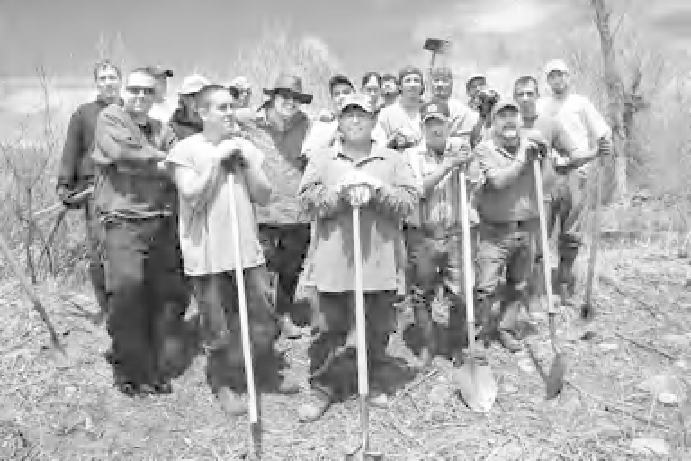Environmental Engineering Reference
In-Depth Information
we need to know how the
degradation
came about.
What went wrong? This type of information can be
provided by historical ecology and, going forward, with
consistent monitoring. Drylands monitoring pro-
grammes currently in operation must provide a broader
spectrum of information to improve our understand-
ing of ecological and cultural sustainability and res-
toration opportunities (Scherr & McNeely 2007). In
developed countries, information from census bureaus,
health and education departments and economic anal-
ysis may make it possible to apply integrated measures
like the
Genuine Progress Indicator
(Costanza
et al
.
2004), but in many areas there will be little or no infor-
mation available and fi eld work will be needed. Failure
to address the social causes of desertifi cation can lead
to ecosystem collapse and political and cultural unrest
as environmental refugees migrate from the arid and
semi - arid lands.
traditional management practices and their impact on
the environment. Valuable lessons may be learned by
studying traditional solutions for managing these
fragile lands (Nabhan 1979; Evenari
et al
. 1982 ;
Wilken 1987 ; Agarwal & Narain 1997 ; Rivera 1998 ).
Rediscovering and applying the traditional wisdom
developed over centuries of experimentation and inno-
vation can improve yields and sustainability in arid
and semi-arid lands, offering the potential for restora-
tion in use by pastoralists, ranchers, farmers or agro-
foresters and speed restoration of lands freed from
management by abandonment or inclusion in pro-
tected areas.
Students and faculty can also help improve the appli-
cation of traditional knowledge to restoration. We can
learn much from studying the water-effi cient waffl e
gardens of the Zuni (Figure 10.6), the terraces of
Yemen, clay pot irrigation in ancient China and the
graceful water wheels of Hama, Syria. It is essential to
rediscover the best practices of the past, not only for
each region but from around the world. The Society for
Ecological Restoration now includes an
Indigenous
Peoples ' Restoration Network
in their activities (Martinez
2010). This project deserves personal, foundation and
government support. Further study and education on
best practices from the past and present are important
everywhere, but are even more critical for areas where
10.3.3
Rediscovering traditional solutions
Restoration begins with understanding, and it is essen-
tial to understand how arid and semi-arid ecosystems
have been managed by people for hundreds, or even
thousands, of years if we want to restore them. Eco-
logical assessments should always include a review of
Figure 10.6
The annual maintenance of the
acequias
or irrigation ditches is a community-building activity as well as a
method of maintaining critical water infrastructure. This water can improve production on farms and ranches and reduce
pressure on adjacent drylands to allow restoration to begin. Social activities that promote cohesion should be included in
restoration projects. (Photograph by Rick Romancito.)





